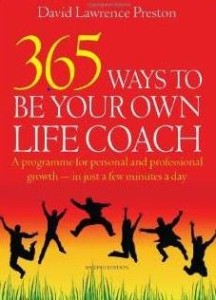It’s impossible to overestimate the importance of the breath. A plentiful supply of fresh air is essential for health, vitality and emotional well-being.
Did you know:
- You can go a month without food, a week without water, but less than five minutes without oxygen?
- An estimated 600 million breaths are taken in an average lifetime?
- Stress and breathing are closely related. Slow, deep breathing has a calming and energising effect on mind and body.
- Deep breathing also activates the lymphatic system, which removes waste products and dead cells from the body. Every cell is surrounded by lymph fluid which (unlike the bloodstream) is not activated by a pump, but by breathing. Deep breathing to fully activate the lymph system, must be a daily priority.
- Your lungs eliminate 60-70% of the toxins from the body. With shallow breaths, your chest and diaphragm hardly move, and you only clear the top third of the lung. The lower two-thirds become full of stale air, carbon dioxide and bacteria. It’s even worse if you’re a smoker – a filthy black tar accumulates in your lungs.
- There is a close connection between your breathing and your emotional state. When the breathing is shallow, you feel edgy. Muscles tighten. The chest and stomach feel tense. When you breathe slowly and deeply, you feel calmer, more relaxed. All breathing has an equivalent emotional rhythm which is reflected in our language.
When we’re excited, we talk about ‘breathtaking scenery’
We breathe ‘a sigh of relief’
We wait ‘with bated breath’
When danger is passed, we ‘breathe easy’
When nerves get to us, we say we’re ‘choking
We know what we eat, but most of us are only aware of our breathing if there’s a problem such as when we’re out of breath after exercise, have a cold, or suffer from a respiratory disorder. Maybe that’s why most of us don’t breathe as deeply as we should.
To maximise your energy levels, combat nervousness and handle stress more easily, practise breathing correctly. Until you try it, you won’t believe the difference it makes!
Control your breathing and you take control of your emotional state. When you deepen and slow your breathing, your emotions calm down and you feel more in control. A few deep breaths or long sighs re-ground and relax you by increasing oxygen supply to the bloodstream. A few minutes a day of slow, deep breathing is one of the most effective antidotes to the hustle and bustle of modern life.
Increasing Your Oxygen Intake
Breathing is carried out by movements of the diaphragm. As it contracts, the diaphragm flattens out, increasing the volume of the chest cavity. Air rushes in to fill this empty space. It works like a set of bellows, relying on the pressure of the air around us to push air into the lungs as the space available increases.
Aerobic exercise is the best way of increasing oxygen intake, but it is not the only way. The following breathing exercises increase lung capacity, clear out stale air, give you more stamina and energy, help you relax and stimulate your immune system. You can, if you wish, do them in time to slow rhythmic music.
Perform each of the following breaths at least ten times, three times per day. (NB: If you start to feel dizzy or faint, stop at once.) Practise this regularly and you will soon find your energy increasing.
The Complete Breath
The complete breath gets more oxygen into the lungs.
Stand or sit erect. Inhale through your nose right into your stomach. Fill your lungs entirely, expanding your ribs and stomach outward. Hold for four seconds. Breathe out through your mouth by contracting your stomach muscles (if it helps, press on the abdomen) and expelling the air as though you were squeezing it out of a balloon. Repeat several times with a continuous flowing action.
The complete breath brings all parts of the respiratory apparatus into action, and all parts of the lungs are exercised.
The Rhythmic Breath
This helps to revitalise, increase energy and calm the emotions.
Inhale through the nose for four seconds, hold for four, exhale for four. Gradually increase the count until you breathe in for twelve (or more), hold for twelve and breathe out for twelve. The longer the exhalation, the better. If you wish, you can silently recite an affirmation such as ‘All stress and tension are flowing out of my body; I am calm’.
Rhythmic breathing is especially beneficial when out walking.
The Healing Breath
The Healing Breath mentally directs energy to any area which is diseased or in pain, and speeds up the healing process.
Take a deep breath and imagine energy flowing from the top of your head, down through your body and legs, and out through your feet. Feel the breath permeating every cell. As you breathe out, be aware of the oxygen leaving your body.
Now breathe in again, this time focussing your mind on any trouble spots. Imagine that the air is like a white or blue (a healing colour) light flowing to this area and gently healing it. As you exhale, imagine the problem being breathed out and eliminated.
If You Are Over-Stressed:
If you are over-stressed, make sure you do some deep breathing exercises every day, at least three times a day, at least three sets of ten breaths per session.
Also:
- Stop smoking: Smoking is totally incompatible with good health. It is deadly dangerous and to be avoided at all costs.
- Work on improving your posture – this gives your lungs a chance to work better.
- Get out into the countryside or visit the coast whenever you can. Stand up straight, shoulders back, expand your chest, and let in that cool, fresh air that your heart and lungs want and need so badly.
Make every breath count – tap into the life force and enjoy full health and vitality!
©David Lawrence Preston, 7.6.2016
Follow me on Facebook and Twitter @Feelinggoodatt
Visit www.feelinggoodallthetime.com
How to Books, 2004



Leave a Reply